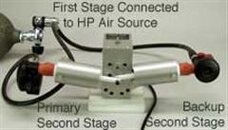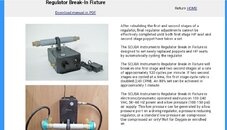Since this is the DIY forum, this is a good fork in the road for discussion. On basic principle, I don't disagree with
@Cdncoldwater in terms of what is acceptable.
Think about what happens with IP creep in between breaths. There's not enough time for IP creep to get to dangerous or to get to freeflow levels. A bigger concern might be a 90 min long boat ride out to the dive site. If the regs sit there for an hour and a half, will a 0.25"/min IP creep result in a freeflow? After all, that rate is only 2.5 psi creep in the 10 min recommended above. But in 90 min, your reg will have crept from 135 to 157psi. Maybe enough to leak from your second stage.
In other words, it's not a safety issue for your regs, or for your dive when thinking breath to breath. It's maybe a gas loss issue.
So what you accept in DIY service is a function of personal belief. Me? I'm a little OCD. I figure a reg that is designed to seal should seal. Unfortunately, in today's mass production, max profit environment, quality control costs money. My new, expensive Mk25EVO/D420 had 4psi IP creep from the factory, an out of spec IP, and a second stage that freeflowed a tiny bit. Fortunately, I could fix it all. New parts from Scubapro, Poseidon and Atomic all have finishes that are less than perfect. Thank goodness for Micromesh!
Local dive shops do NOT take the time to fix these little issues before they release a new reg set, and so we ask questions on ScubaBoard like "how much IP drift before lockup is acceptable?"
IMO, the answer is "None!" And that gives us DIY'ers something to do. But
@Cdncoldwater is also correct. There's nothing wrong with a little drift that then locks up tight. But me, I just prefer that it's zero, or at least doesn't progress over many hours. Just because I might forget to turn off my tank valve, and I don't want to lose any gas due to my forgetfulness. And maybe because the valve ought to perform as designed.






